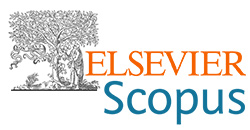Use of laser-induced fluorescence method in characterization of the site contaminated by petroleum hydrocarbons in United States
DOI:
https://doi.org/10.5937/zasmat2202122PAbstract
Spatial characterization of the contamination is a fundamental component of any remediation approach. Compared to conventional investigation methods, the laser-induced fluorescence (LIF) is a faster screening tool and provides the detection of hydrocarbon contamination in real-time. This investigation was conducted at a hydrocarbon-contaminated site in Pennsylvania, US. The presence of light nonaqueous-phase liquids (LNAPL) was detected in 6 of 17 LIF borings, with the reference emitter responses ranging between 45% and 225%. The depth of the response was highly accurate and valuable and provided insight into the spatial distribution of contamination. The results indicated that no substantial amount of LNAPL existed along the LIF borings profile, thus excluding this area as a preferential LNAPL migration pathway. The obtained results contributed to the characterization and remediation of this industrial site.Keywords:
groundwater, petroleum hydrocarbons, spatial characterization, Laser-Induced FluoresenceReferences
Alvarez, J.P., Illman, I.W. (2006) Bioremediation and Natural Attenuation: Process Fundamentals and Mathematical Models. New York, NY: John Wiley & Sons
https://doi.org/10.1002/047173862X
Armiento, G., Caprioli, R., Cerbone, A., Chiavarini, S., Crovato, C., de Cassan, M., de Rosa, L., Montereali, M.R., Nardi, E., Nardi, L., Pezza, M., Proposito, M., Rimauro, J., Salerno, A. (2020) Current Status of Coastal Sediments Contamination in the Former Industrial Area of Bagnoli-Coroglio (Naples, Italy).Chemistry and Ecology, 36(6): 579-597
https://doi.org/10.1080/02757540.2020.1747448
Beškoski, V.P., Miletić, S., Ilić, M., Gojgić-Cvijović, G., Papić, P., Marić, N., Šolević-Knudsen, T., Jovančićević, B.S., Nakano, T., Vrvić, M.M. (2017) Biodegradation of Isoprenoids, Steranes, Terpanes, and Phenanthrenes During In Situ Bioremediation of Petroleum-Contaminated Groundwater.CLEAN - Soil, Air, Water, 45: 1600023
https://doi.org/10.1002/clen.201600023
Danovaro, R., Croce, N.D., Fabiano, M. (1996) Microbial Response to Oil Disturbance in the Coastal Sediments of the Ligurian Sea (Nw Mediterranean).Chemistry and Ecology, 12(3): 187-198
https://doi.org/10.1080/02757549608039081
Environmental Protection Agency (U.S.EPA) (2003) Data About The Underground Storage Tank (UST) Program. Washington, DC, www.epa.gov/swerust1/pubs/ustfacts.pdf
Environmental Protection Agency (U.S.EPA) (2016) Expedited Site Assessment Tools For Underground Storage Tank Sites. Washington, DC: Environmental Protection Agency, https://www.epa.gov/ust/expedited-site-assessmenttools-underground-storage-tank-sites-guideregulators
Marić, N., Petrović, R., Nikić, Z., Beškoski, V., Papić, P., Matić, I., Vrvić, M.M. (2017) Natural attenuation of groundwater contaminated by petroleum hydrocarbons: Mechanism, research concept, practical application.Zaštita materijala, vol. 58, br. 4, str. 445-454
https://doi.org/10.5937/ZasMat1704445M
Pang, L., Zhang, S., Wang, L., Yang, T., Wang, S. (2021) Pollution Characteristics and Risk Assessment of Polycyclic Aromatic Hydrocarbons in the Sediment of Wei River.Environ Earth Sci, 80(5): 203-203
https://doi.org/10.1007/s12665-021-09483-z
U.S.EPA CLU-IN (2015) Hazardous Waste Cleanup Information, Laser-Induced Fluorescence. Environmental Protection Agency, http://www.cluin.org/characterization/technologies/lif.cfm
Downloads
Published
Issue
Section
License
Copyright (c) 2022 CC BY 4.0 by Authors

This work is licensed under a Creative Commons Attribution 4.0 International License.






